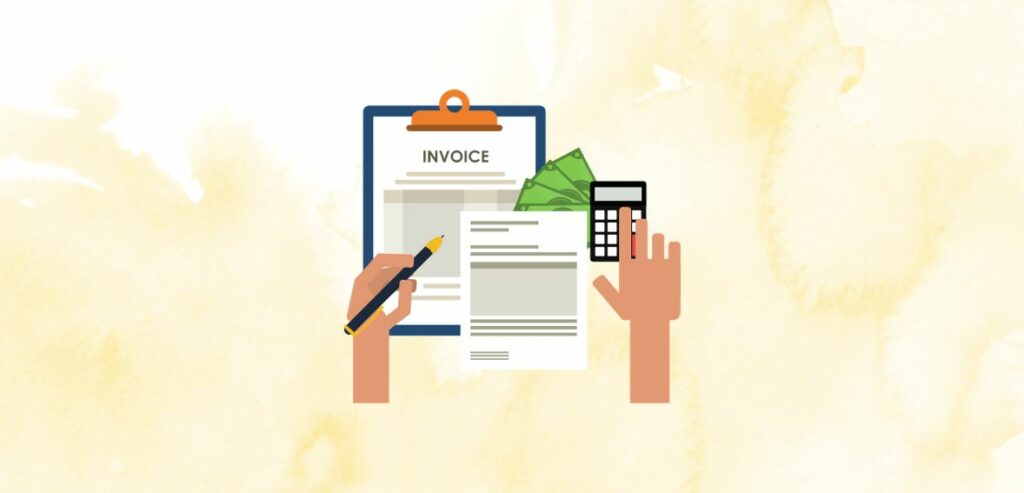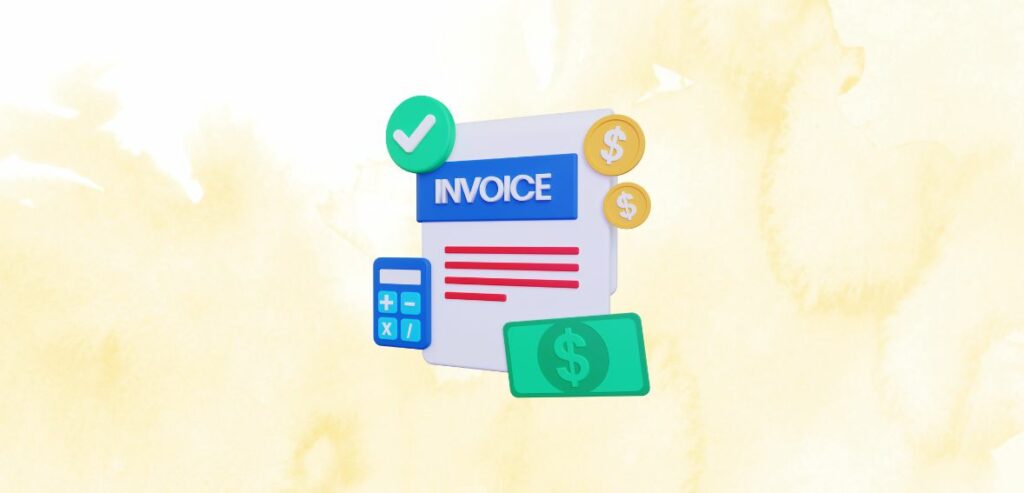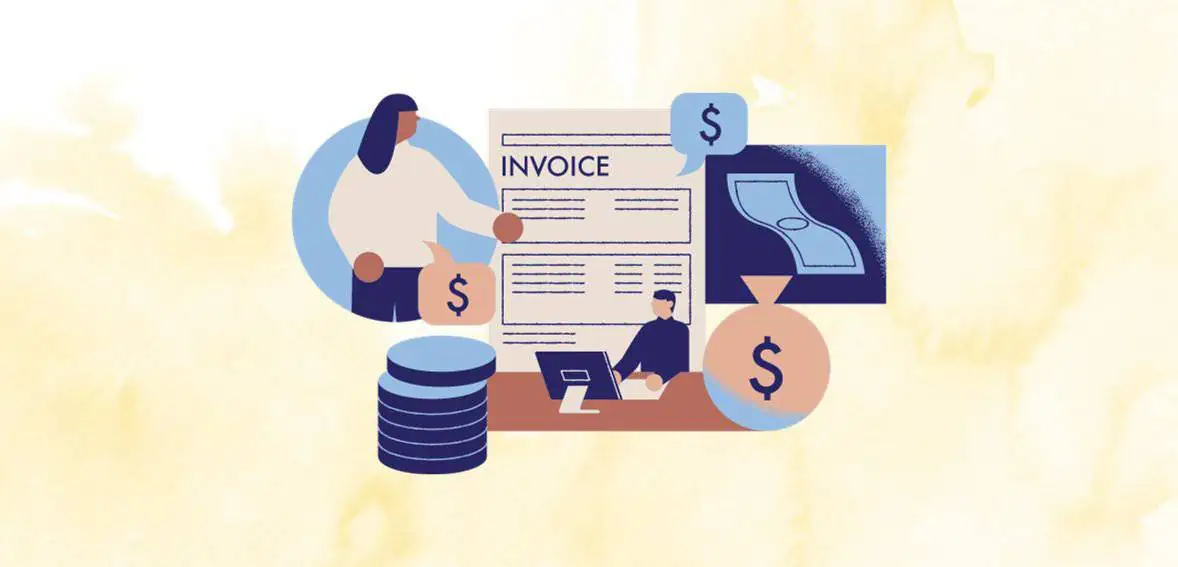The lifeblood of every business is its cash flow. Keeping a close eye on key financial measures is important if you want to see your business on track and prospering in the long run. Invoice processing plays a pivotal role in handling finances effectively for your business. When it comes to business transactions, invoices act as vital components on the expense management side. When a company makes a purchase, the seller issues an invoice detailing the amount owed for the service or the product. The finance or accounting team then records this amount in the accounts payable.
Subsequently, when the bill is settled, the recorded amount is moved out of accounts payable, marked as an expense, and deducted from the company’s bank account. This whole circle of tracking expenses, often linked with accounts payable, is crucial for the seamless functioning of a business. Understanding invoice processing is fundamental to understanding the intricacies of managing bills and sustaining a healthy financial foundation.
In this article, we will discuss the details of Invoice Processing to grasp its nuances, understand how invoices function, and gain valuable insights into this integral aspect of maintaining a thriving business for merchants!
What Are Invoices?
At its core, an invoice, also known as a “sales invoice,” is the official record of a business transaction. Let’s break it down with a practical example – imagine a small business availing office cleaning services from a vendor. Each month, the service provider issues an invoice outlining the precise amount owed by the company for the cleaning services rendered. Crucially, the invoice also outlines the payment terms associated with the transaction.

In the context of business operations, various scenarios unfold where invoices play a crucial role. For instance, when an accounting firm conducts an annual audit for a client, an invoice is generated for the provided service. Similarly, when an office supplies company delivers a shipment of paper to a printing business, an invoice follows for the supplied items. From the vendor’s perspective, the amount due is recorded as an accounts receivable item, representing an inflow of funds into their business bank account. Conversely, for the client, the same invoice registers as an accounts payable item, signifying a payable balance from their account.
In addition to documenting the transaction amount, invoices provide a wealth of information. This includes:
- Details about the business initiating the transaction.
- A unique identifier is assigned to each invoice for tracking purposes.
- The date of the order placement or service provision.
- A concise description of the service or product acquired.
- Specifications regarding the number of units (or hours worked, in case of service).
- The overall amount payable, including taxes and additional charges like shipping and handling.
Maintaining meticulous records of invoices holds significant importance, especially in the uncertainty of potential IRS audits. Well-organized, numbered invoices establish a reliable “paper trail,” empowering business owners to document their company’s income over specific periods with clarity and precision.
So What Is Invoice Processing?
Invoice processing is the comprehensive set of actions involved in settling and tracking supplier invoices, including the steps taken from the initial receipt of the invoice to its payment and entry into the general ledger.

Regardless of the format in which an invoice is received—whether through traditional mail, as a PDF attachment in an email, or in the form of an e-invoice—the contained information needs to undergo a systematic process of automated or manual scanning, then into the account books for processing. Following this initial step, the invoice undergoes a defined workflow for approval and subsequent payment. This organized process ensures a streamlined and efficient handling of supplier invoices within the financial operations of a business.
The Significance of Invoice Processing
Establishing a well-organized invoice processing plan and equipping employees with the necessary resources can yield numerous advantages for a company. Some key reasons to integrate invoice processing into your organizational framework include:
- Improved Vendor Relations:
Enhancing the efficiency of the invoice processing system contributes to positive relations with your suppliers. By ensuring timely payments, this streamlined system fosters stronger connections with external parties, promoting trust and reliability in your business partnerships.
- Reduced Employee Hours:
The implementation of an effective invoice processing system not only benefits vendor relationships but also translates into time savings for your employees. Streamlining this process allows for the reduction of working hours, enabling your workforce to redirect saved time toward other tasks, thereby fostering a more productive and efficient team.
- Effective Cashflow Management:
Invoice processing plays a pivotal role in managing your organization’s cash flow effectively. It enables your company to adhere to budget allocations and monitor all outstanding debts, fostering responsible spending and investment practices.
- Reduced Payment Times:
Implementation of an invoice processing system streamlines the progress of bills through the processing structure, facilitating prompt payments. This efficiency in processing contributes to decreased payment times, ensuring timely settlement of financial obligations.
How Invoice Processing Works?

Here’s a simple breakdown of how Invoice Processing works in 4 easy ways:
Step 1: Receiving & Reviewing Invoices
The initial step in the invoicing process is receiving or capturing the invoice. The format of incoming invoices may vary, depending on your company’s preferences or those of the businesses or contractors sending them.
To ensure comprehensive tracking of all invoices, companies often conduct an invoice validation process and a 3-way invoice matching process to verify the accuracy of the invoice data before making payments. Invoice validation is a crucial aspect of invoice management, involving a thorough review of supplier invoices to identify and rectify errors.
Key checks in this process include:
- Verifying the invoice number to prevent identical payments.
- Confirming the amount against a purchase order or contract.
- Validating the billing address to mitigate the risk of check fraud.
Step 2: Capturing Invoices
Following the review, the invoice data-capturing process takes place. Capturing involves extracting and entering the data into the accounting system, specifically in the accounts payable section.
For some companies, dealing with monthly invoices in the hundreds, amounting to significant cash outflows, is commonplace. As businesses expand, they may consider establishing entire payable departments dedicated to managing the invoicing process. To minimize the risk of human error, companies often utilize general ledger codes. Efficient handling of these steps is crucial for maintaining accurate financial records and ensuring smooth cash flow management.
Step 3: Secure Invoice Approval
In line with your organization’s structure, some invoices may need approval from one or more staff members or departments before proceeding.
Once a new invoice is logged into the system, it’s advantageous to initiate the approval process promptly. This ensures that the invoice processing stays on track, providing the concerned parties with ample time to complete their approval steps.
Step 4: Payment Processing After Approval
Once the invoice gets the green light, it’s time to settle the payment with the vendor. To process the payment, the accounts payable representative requires:
- The total amount owed.
- Vendor information.
- Payment identifiers, such as the account number or invoice number.
- Accepted payment methods.
While checks were once the go-to, nowadays, ACH or wire transfers are commonly preferred, especially for businesses with international dealings. Approved invoices follow the payment terms negotiated with the vendor. Sometimes, your business may opt to pay an invoice early to capitalize on a discount. For instance, if you pay before the agreed-upon time, you can benefit from an early payment discount and deduct 1% (which is industry standard) from the total amount owed. This ensures efficient and advantageous payment handling.
What Is a Journal Entry And Why It Is Important In Invoice Processing?
In accounting, handling invoices involves making specific journal entries to keep track of transactions related to paying and receiving invoices. This practice serves two vital purposes: monitoring cash flow and facilitating the creation of year-end financial statements. Beyond financial management, a sales invoice also holds legal significance, providing concrete evidence of a business agreement.
This legal proof is crucial for safeguarding against potential legal issues or minor lawsuits. Having a well-documented sales invoice establishes the legitimacy of your business transactions with clients, ensuring transparency and minimizing the risk of disputes. Comprehending these logs is essential for maintaining precise financial records. Here’s a simple breakdown:
Receipt
Upon receiving an invoice, the Accounts Payable division logs it as a liability in the company’s books. The journal entry involves debiting the expense or asset account and crediting the Accounts Payable (AP) account. For instance, if the business receives a $1000 invoice for office supplies, the journal entry appears as follows:
Journal Entry:
- AP (Credit) – $1000
- Office Supplies (Debit) – $1000
Payment
When settling the invoice, the AP is debited, and the Bank/Cash is credited. For example, if the business pays the $1000 invoice, the journal entry unfolds as follows:
Journal Entry:
- Cash (Credit) – $1000
- AP (Debit) – $1000
By making these entries, the company guarantees that its cash flow and liabilities are appropriately reflected in its books of accounts.
Efficient Invoice Processing – Helpful Tips
If you’re streamlining invoice processing in your organization, consider these tips to enhance the efficiency of the process:
- Establish and Document Invoice Policies:
Maintain clarity by developing and documenting the invoice processing policies. This written record not only assists you or other staff members when handling new invoices but also ensures a consistent processing structure across the organization. This contributes to the maintenance of uniform and easily accessible records.
- Automate The Process:
Employing a business process automation solution is the most effective way to automate tasks that are repetitive and time-consuming. Tasks such as follow-ups, approval alerts, and tracking supplier performance can be automated. Studies show that introducing automation to the accounts payable process significantly reduces invoice processing costs and enhances overall efficiency.
- Utilize Universal Tagging Systems:
When setting up a digital invoicing system, incorporate a universal labeling structure for your invoices. This ensures consistency in the way each invoice is entered, regardless of the user. A standardized approach simplifies organization and facilitates data retrieval for you and your colleagues.
- Regular Reconciliation:
Reconcile your supplier statements and accounts payable ledger regularly. This routine ensures thorough accountability for all invoices and allows for prompt identification and resolution of discrepancies. By doing so, you enhance the precision of your financial tabs.
- Build Strong Relationships With Vendors:
Prioritize prompt settlement of the invoices and maintain transparent touch with your suppliers. Building strong relationships with suppliers is crucial and can result in advantages like early settlement discounts and favorable negotiation terms. These positive connections contribute to a smoother invoicing process and overall business efficiency.
- Organize Everything
Whether you opt for an E-Invoice system or rely on paper records, maintaining organization is crucial for maximizing the effectiveness of invoice processing. Establishing a systematic filing system facilitates quick access to records when required.
Grouping similar invoices simplifies the process of gathering relevant information, especially when you need to request details related to invoices from a specific supplier or those due within a particular period.
Why You Should Automate Invoice Processing?
Automated invoice processing extends its benefits far beyond mere efficiency enhancement, offering a spectrum of advantages that positively impact various facets of business operations. These benefits include:
- Businesses can achieve better liquidity and enhanced control over cash management through the automated handling of invoices.
- Automation provides easy access to crucial process data, empowering businesses to make more informed and effective decisions.
- Automated processing enhances forecasting accuracy, providing businesses with a clearer picture of financial projections.
- The automation of invoice processing contributes to improved spend visibility, allowing businesses to track and manage their expenditures.
- By streamlining payment cycles and ensuring timely transactions, automated processing fosters improved relationships with suppliers, bolstering trust and collaboration.
- The automated approach expedites payment cycles, ensuring quicker settlement of financial obligations.
- Lower costs associated with implementing e-invoice software make automation an economically viable choice.
- Automated solutions offer the latest functionality and user-friendly interfaces, minimizing the accounting burden for seamless adoption across the organization.
Conclusion
Understanding invoice processing is fundamental for any business, as invoices track expenses and income, ensuring the seamless functioning of operations. We have clarified the core concepts, from the role of invoices in transactions to the significance of invoice processing. Understanding the nuances of invoice processing, including receipt, capturing, approval, and payment unveils its vital role in effective expense management. Implementing efficient invoice processing systems brings manifold advantages, from improved vendor relations to reduced employee hours and effective cash flow management.
Frequently Asked Questions
Q: What is the step-by-step process for invoice handling?
Invoice processing is a series of steps that includes receiving a supplier invoice, approving it, setting a remittance date, making the payment, and finally, recording the transaction in the general ledger.
Q: What does the P2P cycle involve?
The P2P cycle, also known as procure-to-pay, covers the entire process from requisitioning and purchasing to receiving, payment, and accounting for goods and services. It spans from the point of order to the actual payment.
Q: How do I go about processing a PO invoice?
Here’s a nutshell guide to the Purchase Order (PO) process:
- Create a purchase order.
- Send out requests for the quotations.
- Analyze and choose a vendor.
- Negotiate the contract and send the PO.
- Receive goods/services.
- Verify the invoice.
- Authorize the invoice and make the payment.
- Maintain records.
Q: What is the 3-way invoice matching process?
The three-way match is a procedure that involves comparing the purchase order, invoice, and goods receipt to ensure they align before approving the invoice. This guarantees that the customer’s order, supplier’s delivery, and the GRN all contain consistent information.

